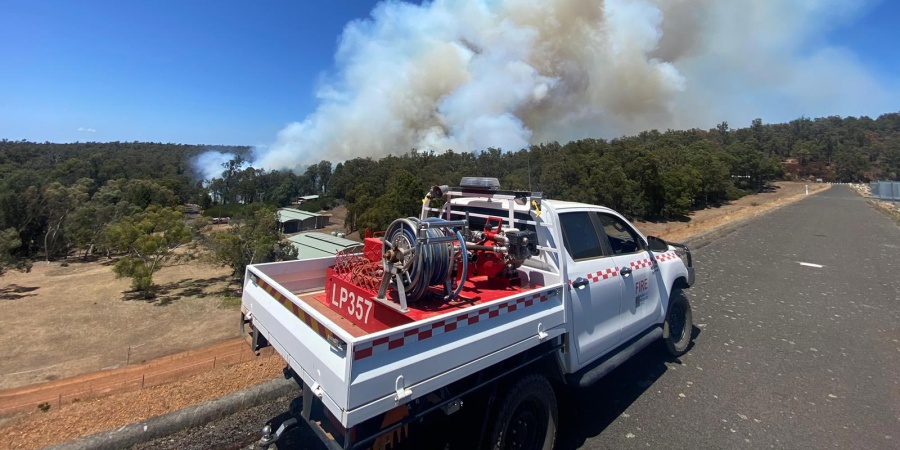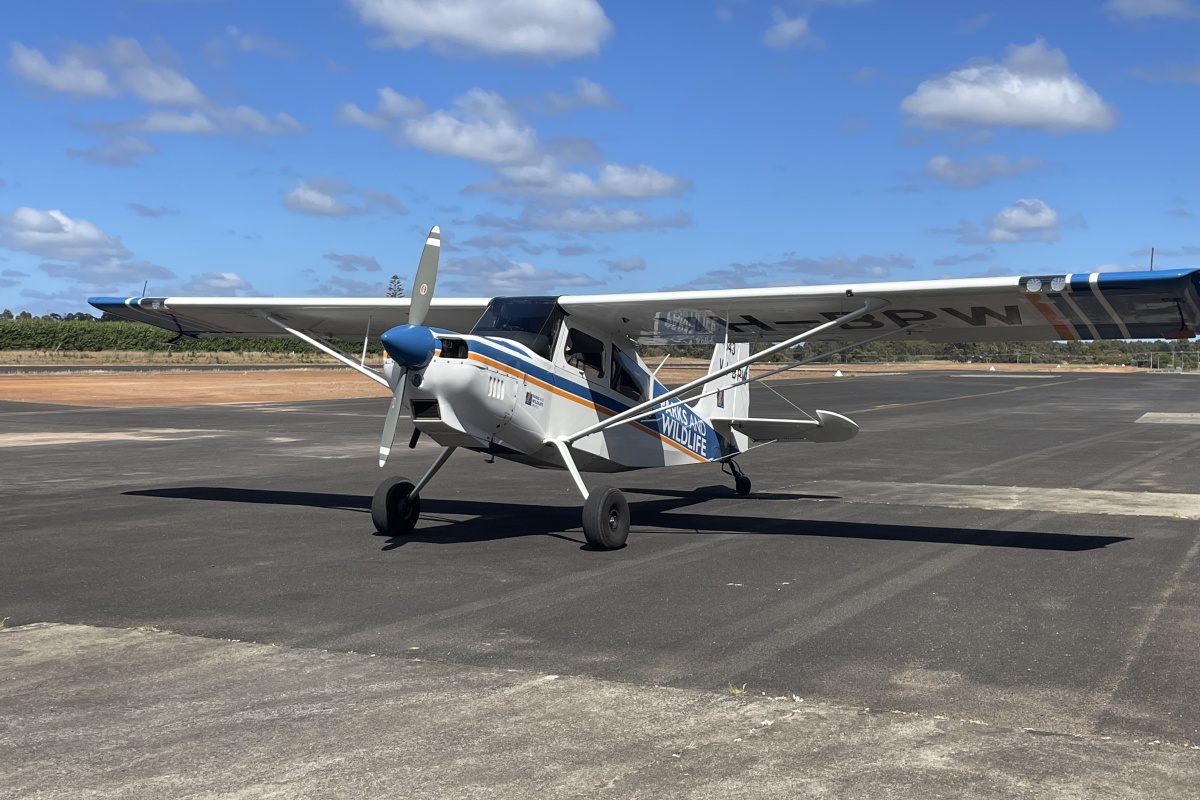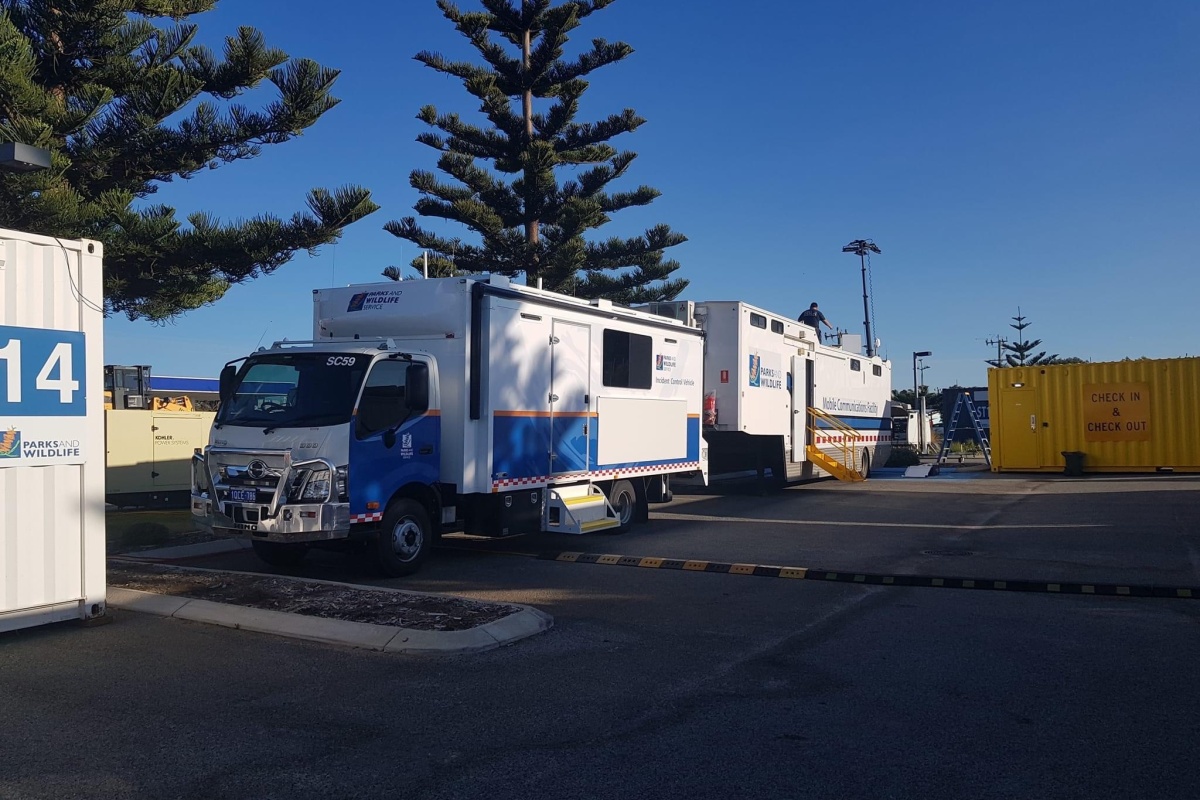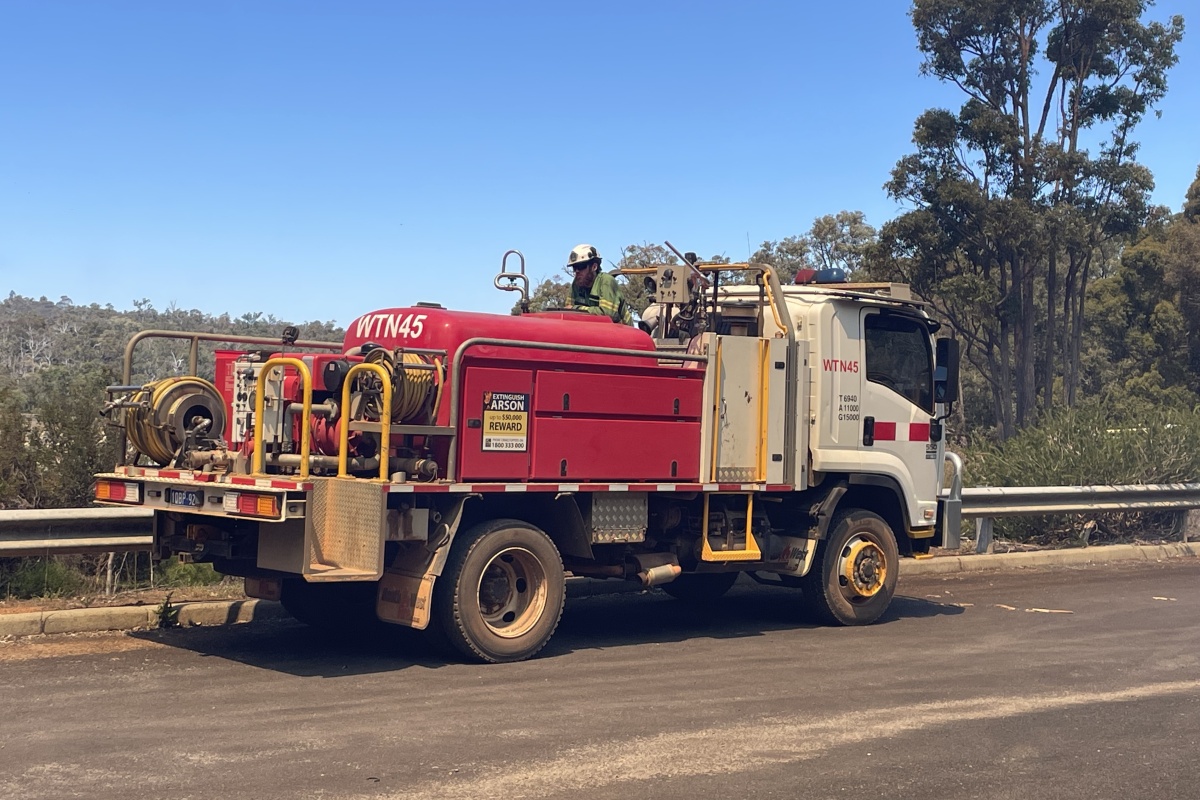
Light firefighting unit
The department also holds trained and experienced firefighters and a large array of fire equipment in readiness to address bushfires when they occur. A fleet of large 4WD fire tankers and small 4WD units are maintained, along with a fleet of heavy machinery such as dozers. In addition to its own fleet, the department uses a network of contractors and private plant operators around the state to help fight fires.
Detection

Satellites
In remote regions, where the department manages over 88 million hectares of land, satellites are used to detect fires instead.
- The department uses Landgate's Firewatch ;and Geoscience Australia's Sentinel monitoring systems to detect and monitor bushfires in the more remote areas of the state.
- These systems provide information on hotspots on the Earth’s surface that could be a fire.
- The data is sourced from MODIS satellites that pass Western Australia every two hours.
- The data collected is processed in near real time to provide hotspot information with more than 80 per cent accuracy.
Spotter aircraft
Light fixed wing aircraft, such as the Scout, are used to detect fires in south-west regions. Spotters, as they are referred to, are used during the fire season to detect smoke and relay the message back to districts.
- Each spotter has a unique circuit that it flies to reduce time and provide continuity of detection.
- Parks and Wildlife has nine light fixed wing aircraft.
- Spotter planes were originally trialled in Nannup during the summer of 1973-74, and in Collie, Harvey and Manjimup the following summer. They were found to be very effective so their use was expanded and refined.
- Spotter circuits, detection and intelligence are backed up by fire towers when aircraft are unable to operate due to controlled airspace and/or severe weather conditions.
Towers
The Department of Parks and Wildlife operates 13 fire detection towers. They are one of the best means of detecting fires in remote forested areas. Towers are located strategically around the southern regions of WA to ensure maximum coverage of parks and forests.
Many of the existing towers are still used but some are non-operational. These lookouts are staffed during the fire season for varying periods depending on the fire danger rating, the likelihood of lightning storms and existing fires.
Fire facts
- Mungalup Tower was built in 1958, is 30 metres high, and is made from jarrah. This tower will soon be replaced by a 40 metre steel tower
- The Mount Williams Tower is a 20 metre high steel tower built in 2002-03. Both towers are still operational and are manned all summer according to Fire Danger Ratings.
- Tree lookouts were originally constructed in the early 1920s. They were used for fire detection up until the 1960s.
Management

Incident management facilities
Parks and Wildlife uses a variety of specialised equipment that can be mobilised to enable effective management at bushfires anywhere in the southern half of the state. This includes:
- a mobile communications facility
- logistics support trailers
- 12 portable incident management offices made from sea containers
- ablution caravans
- cooking vans and cool rooms
- satellite communication trailers
- Marquis and Western shelter tent.
Parks and Wildlife uses the latest communication networks technology. Radios are installed in all machines, vehicles and aircraft, so vital information can be relayed without delay. Repeater towers are dotted around the south-west for permanent coverage, while portable towers can be mounted in remote regions during a fire. This ensures that the department has radio communication coverage anywhere there is a fire.
Suppression

Aircraft
The department has extensive aerial firefighting capabilities, including aircraft used to detect and combat bushfires in vast areas of often inaccessible and rugged country. The fleet of both fixed and rotary wing aircraft provides effective support to ground based fire fighting operations.
Aerial suppression aircraft such as fixed wing water bombers are used for an aggressive initial attack on a head fire, slowing its rate of spread and intensity, allowing ground crew time to access the fire.
Aerial suppression operations utilise different water suppressants including foams and retardants dependant on the situation.
A light fixed wing aircraft such as the scout or light helicopter (rotary wing) with an experienced fire officer on board sits above the suppression aircraft coordinating and supervising the operations. These aircraft types are also used to gather intelligence on a fire and for logistical purposes such as ferrying personnel and equipment.
Parks and Wildlife coordinates its aerial resources with those managed by DFES (large and small helicopters) to ensure effective suppression operations.
Tankers, firefighting units and heavy machinery
Parks and Wildlife operates a a variety of fire vehicles. These range from larger fire tankers to small light fire units and a number of plant or heavy machines. Each fire vehicle has a valuable role in bushfire suppression and mop-up.
The department has two types of heavy fire tankers that are used for fire suppression and fire mop-up. These tankers are commonly referred to as Gang Trucks (GT) and Heavy Duties (HD). Each truck holds 2700 litres of water. There are some differences with these two trucks which may determine where they are placed on a fire edge. Click on the below images for further information.
Heavy machinery
Parks and Wildlife operates a fleet of heavy equipment and plant which it uses to construct containment lines and clear tracks during a bushfire, and to prepare for fire. In addition to its own fleet of plant, the department uses a network of contractors and private plant operators around the state to assist fighting fires.
The heavy machinery used on a fire ground have some important safety features.
- Roll over protection bars and falling object protection bars are either built into the structure of the machine or built as an external structure. The thick metal bars protect the machine and the operator from injury occurring as a result of falling objects or rollover incidents.
- Fire quelling systems are used on all department bulldozers and front end loaders. The system is essentially a foam-filled cylinder and pump that is built onto the machines. It works on a fusible link, which melts when hot. This activates the pump and turns on sprinklers which spray foam over the engine and transmission system, smothering the flames.
- Heavy machines working on a fire edge are supported by tankers.

